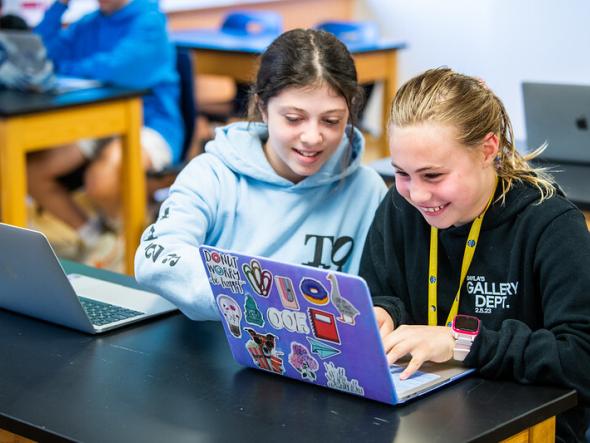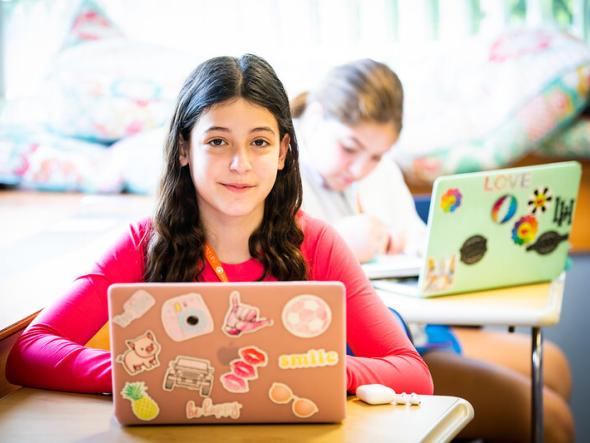There are many times that a school will invest in significant technological equipment, including but not limited to Apple TVs, smart boards, iPads or 3D printers. Each is a powerful tool, but the purchase of those items does not indicate if the education of our students will be improved. These items should be mediums used toward a broader educational goal.
Let’s take a hypothetical example. A school invests in 30 VR (virtual reality) headsets and invites parents to experience what the Beit Hamikdash looked like in a 3D reality. Many parents walk away excited, but have they really learned what the school’s educational goal is? If the VR headsets are part of a larger effort to make learning more experiential and relevant, then wonderful; but if the school is unable to identify any other pathways to support that same outcome, then it is a misleading presentation.
Or take the hiring of an educational technologist. If the school has identified a larger educational goal, then an educational technologist can help facilitate school growth and student learning to achieve that goal. However, if no larger educational goal has been identified, then this position might entail an individual introducing random apps to teachers who may or may not use them, or giving one-off presentations to students about computer programs that they may or may not remember.
That’s why flashy doesn’t always mean better. When a school presents new equipment to parents, it’s important to ask the followup questions: What is the broader goal, and how will the use of this equipment lead to achieving that goal? If the school lacks answers, then the tool is not as impressive as it may have initially appeared.
One important note: Schools may receive funds (such as state grants) earmarked for certain technological devices. In those cases, even if the school cannot yet identify the broader implications of the technology, they should of course maximize the resources that students have access to and incorporate those tools when possible and appropriate.
Access to technology should be limited.
I recently finished my doctorate at New York University. The program primarily consisted of synchronous classes online in the evenings. During the 90-minute sessions, I would listen… while sending a WhatsApp to my friend in the cohort, ordering my Walmart groceries, and scrolling Pinterest to decide where I should go on yeshiva break.
Research is mixed on the best practices in terms of notetaking. Some argue that handwritten notes help information to be more cemented in long-term memory. Accordingly, there are some schools, like the notorious one in Silicon Valley, in which students are allowed no devices in the classroom. I tend to agree with that line of thinking, but I’m not certain. There are other researchers who argue that typing allows students to engage with the material instead of being rushed to get the information down on paper. Truthfully, different people learn best in different ways, so it’s probably not a one-size-fits-all, as with most learning practices.
Here’s what we do know though: Internet or cellphone access during class or learning is distracting. I know very few adults who can focus when they have a device in front of them, and children have even less self-control. If a school allows students to have devices on them during class with no restrictions, speak up.
An extension of this principle is what homework looks like. Hopefully all parents have restrictions on technology at home, but these limitations are often undermined by the expectations of school. Here are a few case studies to demonstrate the appropriate and inappropriate usage of technology for homework assignments:
—A tenth grade student needs to write a five-page paper on Death of a Salesman. This is a summative assignment that cannot be completed within the designated class time. At home, the student will need to use their personal device to write their paper because handwriting this assignment would be onerous and inhibit the student’s ability to edit.
—A sixth grade student is asked to turn in a math paper on Google Classroom. A family should be given the option of turning in this paper the old-fashioned way. While having an electronic record and place for submissions helps the teacher (and sometimes the student) organizationally, the usage of technology may undermine the family’s ability to limit access to a device. It is easy for a middle school student to begin on Google Classroom and then get distracted.
—A third grade student is assigned to watch a video on YouTube. Schools should not do this. There is no control over YouTube commercials, suggested videos on the side or the comments. And homework for third graders on a device should be rarely or never mandated.
Parents should request that their child’s school is thinking deeply and critically about when technology is mandated at home. Not every educator or family will agree on when the usage of technology at home is appropriate, but if a school is not even having the conversation, it’s a red flag.
No school has the answer.







